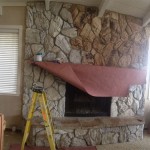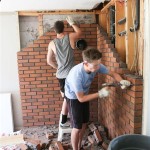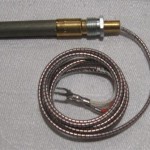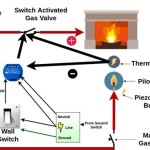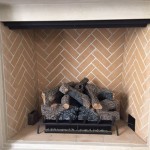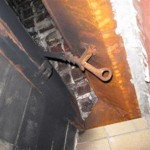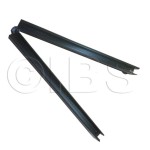Fireplace Mantel Surround Kits: A Comprehensive Guide
Fireplace mantel surround kits provide a convenient and aesthetically pleasing method for enhancing the focal point of a living space. These kits offer a packaged solution for homeowners looking to upgrade or renovate their fireplace without the complexities of custom design and construction. This article delves into the components, advantages, installation process, and considerations when selecting a fireplace mantel surround kit.
A fireplace mantel surround fundamentally comprises the mantel shelf (the horizontal projection above the firebox), the legs or pilasters (vertical supports flanking the firebox), and the header or frieze (the horizontal element connecting the legs above the firebox opening). The surround frames the firebox opening, providing a decorative border and a surface for displaying decorative objects. Kits typically contain all the necessary pieces to assemble a complete mantel surround.
The prevalence of fireplace mantel surround kits stems from their ease of purchase and installation compared to bespoke designs. The pre-designed and pre-fabricated nature of the kits reduces the need for intricate carpentry skills and specialized tools. This makes them a viable option for homeowners with basic DIY proficiency.
Key Point 1: Components and Materials of Fireplace Mantel Surround Kits
The components included in a fireplace mantel surround kit vary based on the design and manufacturer, but certain elements are consistently present. Understanding these components is crucial for evaluating the suitability of a kit for a specific fireplace and aesthetic preferences.
Mantel Shelf: This is the primary horizontal element that sits atop the legs or pilasters. It serves as both a decorative surface and a functional shelf for displaying items such as picture frames, candles, or seasonal decorations. The mantel shelf's depth, width, and style contribute significantly to the overall aesthetic of the fireplace.
Legs or Pilasters: These vertical supports frame the firebox opening on either side. They can be simple, straight columns or more ornate designs with fluting, carvings, or other decorative details. The legs provide structural support for the mantel shelf and contribute to the visual balance of the surround.
Header or Frieze: This horizontal element connects the legs or pilasters above the firebox opening. It can be a simple, flat piece or a more elaborate design with moldings, carvings, or other decorative features. The header helps to visually unify the surround and adds to its overall style.
Firebox Facing (Optional): Some kits include a firebox facing, which is a decorative panel that surrounds the firebox opening itself. This component can be made of materials such as tile, marble, or metal and is designed to enhance the appearance of the firebox. The facing can be particularly useful for covering existing, less attractive firebox surrounds.
Hardware and Installation Brackets: Kits invariably include the necessary hardware, such as screws, nails, and brackets, for assembling and installing the surround. The quality of the hardware can influence the ease of installation and the overall stability of the assembled mantel.
Fireplace mantel surround kits are manufactured using a variety of materials, each offering its own set of aesthetic and functional characteristics.
Wood: Wood is a classic material for fireplace mantels, offering a warm and inviting feel. Common wood types include pine, oak, maple, and poplar. Wood can be painted, stained, or left natural to suit different decor styles. Solid wood mantels offer durability and a traditional look, while wood veneers over engineered wood provide a more cost-effective option.
MDF (Medium-Density Fiberboard): MDF is an engineered wood product that is often used in mantel kits due to its affordability and stability. It is less prone to warping or cracking than solid wood and can be easily painted or covered with a veneer. MDF mantels are a good option for those seeking a budget-friendly and consistent finish.
Stone Veneer: Stone veneer kits offer the look of natural stone without the weight and cost of solid stone. These kits typically consist of thin pieces of manufactured stone that are applied to a wooden or MDF frame. Stone veneer can add a rustic or contemporary feel to a fireplace.
Cast Stone: Cast stone is a manufactured material that resembles natural stone. It is made from a mixture of cement, aggregates, and pigments. Cast stone mantels are durable and can be molded into a variety of shapes and designs. They offer a more substantial and upscale look compared to wood or MDF.
Metal: Metal mantels, such as those made from cast iron or steel, can provide a modern or industrial aesthetic. Metal mantels are durable and fire-resistant, making them a practical choice for fireplaces. They can be powder-coated in various colors or left with a raw metal finish.
Key Point 2: Advantages of Using Fireplace Mantel Surround Kits
Choosing a fireplace mantel surround kit over custom-built options presents several advantages, particularly in terms of cost, convenience, and installation.
Cost-Effectiveness: Mantel kits are generally more affordable than custom-built mantels. The mass-produced nature of kits allows manufacturers to leverage economies of scale, resulting in lower prices for consumers. Custom mantels, on the other hand, require individualized design, fabrication, and installation, which can significantly increase the overall cost.
Time-Saving: Kits save time in several ways. First, the design is already established, eliminating the need for lengthy planning and consultation with a designer or carpenter. Second, the components are pre-cut and pre-finished, reducing the amount of on-site work required. Third, the installation process is typically straightforward, allowing for quicker completion of the project.
Ease of Installation: Most fireplace mantel surround kits are designed for relatively easy installation. They come with detailed instructions and all the necessary hardware. Homeowners with basic DIY skills can often install a kit themselves, saving on professional installation costs. The pre-cut nature of the components ensures that they fit together properly, simplifying the assembly process.
Design Consistency: Kits offer design consistency and predictability. The components are designed to work together seamlessly, creating a cohesive and aesthetically pleasing look. This eliminates the risk of mismatched elements or design flaws that can occur with custom-built mantels. The availability of various styles and finishes allows homeowners to choose a kit that complements their existing decor.
Wide Variety of Styles: The market offers a vast selection of fireplace mantel surround kits in diverse styles, ranging from traditional to contemporary. This allows homeowners to find a kit that matches their personal preferences and the architectural style of their home. Common styles include Victorian, Colonial, Craftsman, and modern designs.
Reduced Mess and Disruption: Compared to custom construction, installing a mantel kit generates less mess and disruption. The components are pre-fabricated, minimizing the need for cutting, sanding, and finishing on-site. This reduces dust, noise, and other inconveniences associated with construction projects. The faster installation time also reduces the overall disruption to the household.
Key Point 3: Installation Process and Considerations
The successful installation of a fireplace mantel surround kit depends on careful preparation, adherence to the manufacturer's instructions, and attention to safety considerations. Prior to commencing the installation, it is imperative to gather the necessary tools and materials, thoroughly review the instructions, and verify the compatibility of the kit with the existing fireplace.
Preparation: Begin by thoroughly cleaning the area around the fireplace. Remove any existing mantel or surround elements that will be replaced. Ensure that the firebox opening is clean and free of debris. Measure the dimensions of the existing fireplace and compare them to the specifications of the mantel kit to ensure a proper fit.
Tools and Materials: Gather the necessary tools and materials, including a level, measuring tape, drill, screwdriver, hammer, safety glasses, and any specialized tools recommended by the manufacturer. Ensure that you have the correct type of fasteners for the wall material (e.g., drywall anchors for drywall, masonry screws for brick or stone).
Assembly: Assemble the mantel surround according to the manufacturer's instructions. This typically involves attaching the legs or pilasters to the mantel shelf and header using screws or other fasteners. Ensure that all connections are secure and that the mantel is square and level.
Installation: Position the assembled mantel surround against the wall, aligning it with the firebox opening. Use a level to ensure that the mantel is perfectly level. Mark the locations for the mounting brackets on the wall. Drill pilot holes and install the mounting brackets using appropriate fasteners. Secure the mantel surround to the mounting brackets.
Finishing: Once the mantel is securely installed, inspect it for any gaps or imperfections. Fill any gaps with caulk or wood filler and sand smooth. Paint or stain the mantel to match the surrounding decor, if desired. Install any additional decorative elements, such as moldings or trim.
Safety Considerations: Safety is paramount when installing a fireplace mantel surround. Ensure that the mantel is installed at a safe distance from the firebox opening to prevent overheating or fire hazards. Consult local building codes and regulations regarding fireplace mantel clearances. Never place flammable materials directly on or near the mantel shelf. Regularly inspect the mantel for signs of damage or wear, and address any issues promptly.
Clearance Requirements: Adhering to safety regulations is essential during installation. Most codes specify minimum clearances between the firebox opening and combustible materials, including the mantel surround. These clearances vary depending on the type of fireplace and the materials used in the surround. Consult local building codes and the fireplace manufacturer's specifications to ensure compliance.
Professional Installation: While many homeowners can successfully install a fireplace mantel surround kit themselves, professional installation may be advisable in certain situations. If you lack DIY experience, are unsure about any aspect of the installation process, or if the existing fireplace presents unusual challenges, consider hiring a qualified contractor. A professional can ensure that the mantel is installed correctly and safely, and can also address any potential issues that may arise.
The selection and installation of a fireplace mantel surround kit can significantly enhance the aesthetic appeal and functionality of a fireplace. By understanding the components, advantages, installation process, and safety considerations, homeowners can make informed decisions and achieve a satisfying outcome.

Fireplace Mantels Mantel Shelves Custom Surrounds And More Direct

White 52 Inch X 39 Wood Fireplace Mantel Surround Kit With Shelf And Trim Essex From Mantels Direct Poplar Wooden Chimney Com

Modern Ember Lenwood Traditional Wood Fireplace Mantel Surround Kit Unfinished 56 Inch Opening Classic Design Tiered Frame Molding Com

Modern Ember Lenwood Traditional Wood Fireplace Mantel Surround Kit Unfinished 48 Inch Opening

Wood N Finish Fireplace Mantel Kit Java

50 Cozy Fireplace Ideas Best Mantel Decor

Fireplace Mantels Mantel Shelves Custom Surrounds And More Direct

How To Make A Faux Fireplace Mantel Surround Shiplap And Ss

Whole Pearl White Freestanding Solid Wood Electric Fireplace Mantel Surround Kit Manufacturers And List

White 58 Inch X 42 Wood Fireplace Mantel Surround Kit With Shelf And Trim Fairfield From Mantels Direct Poplar Wooden Chimney Com
Related Posts

